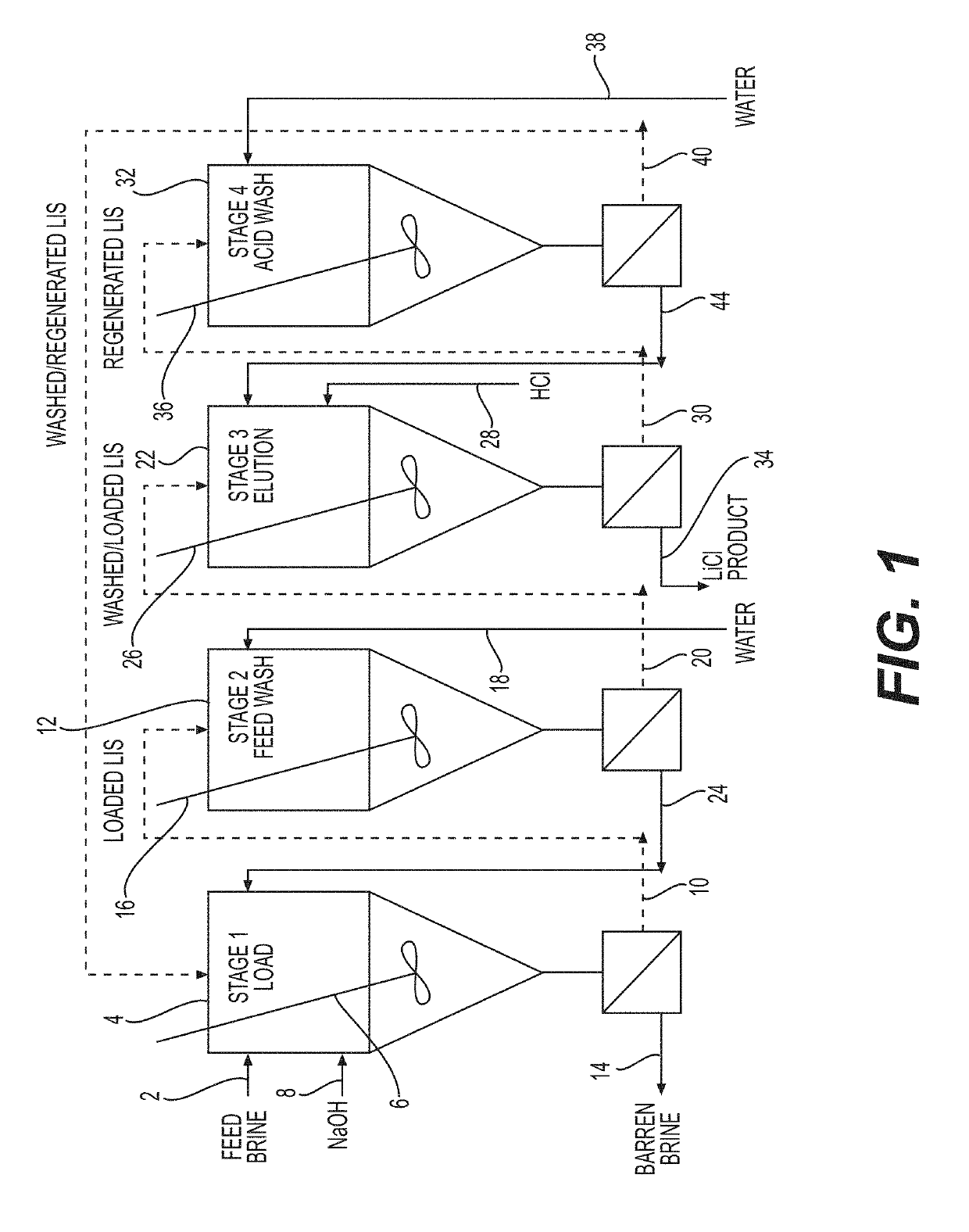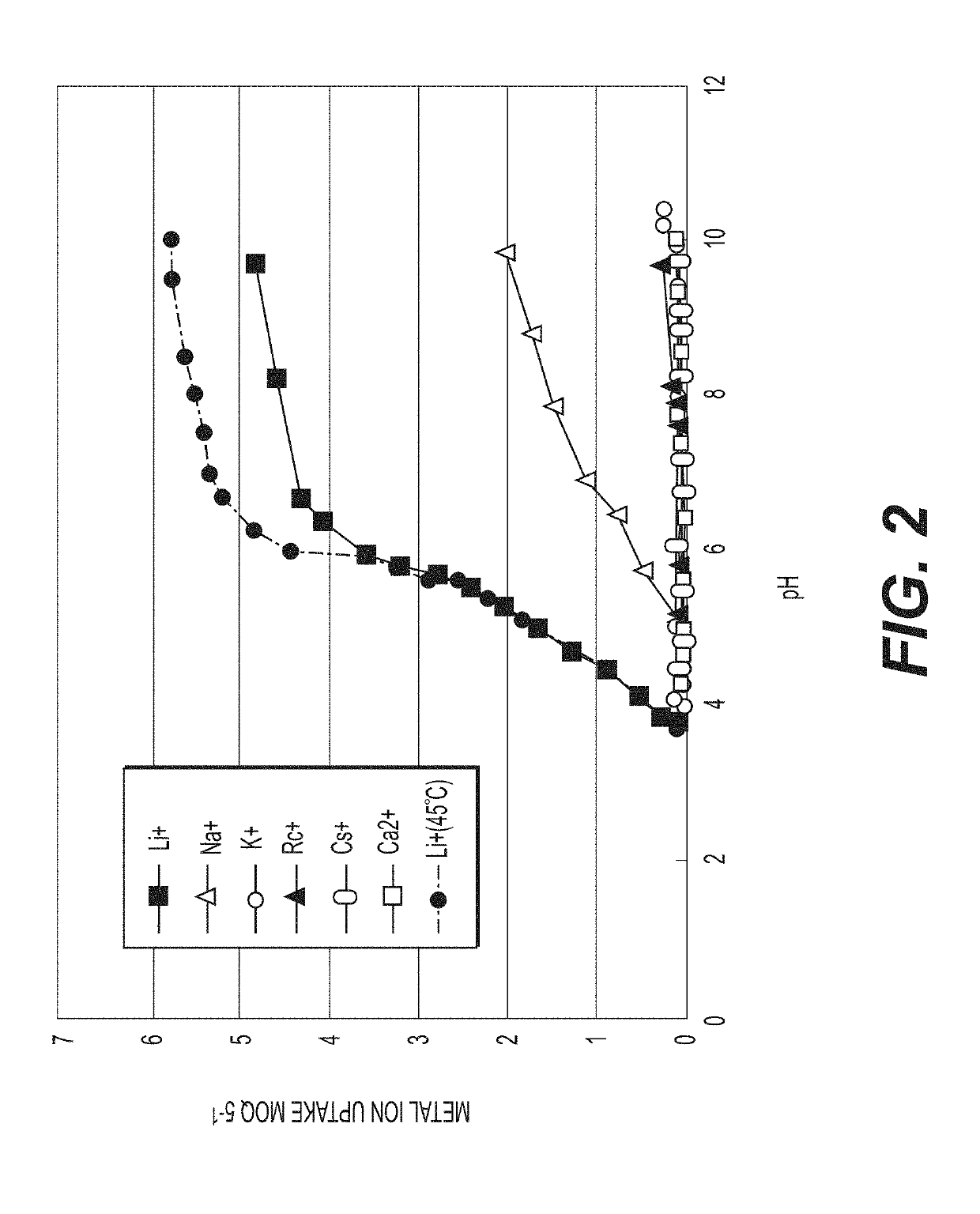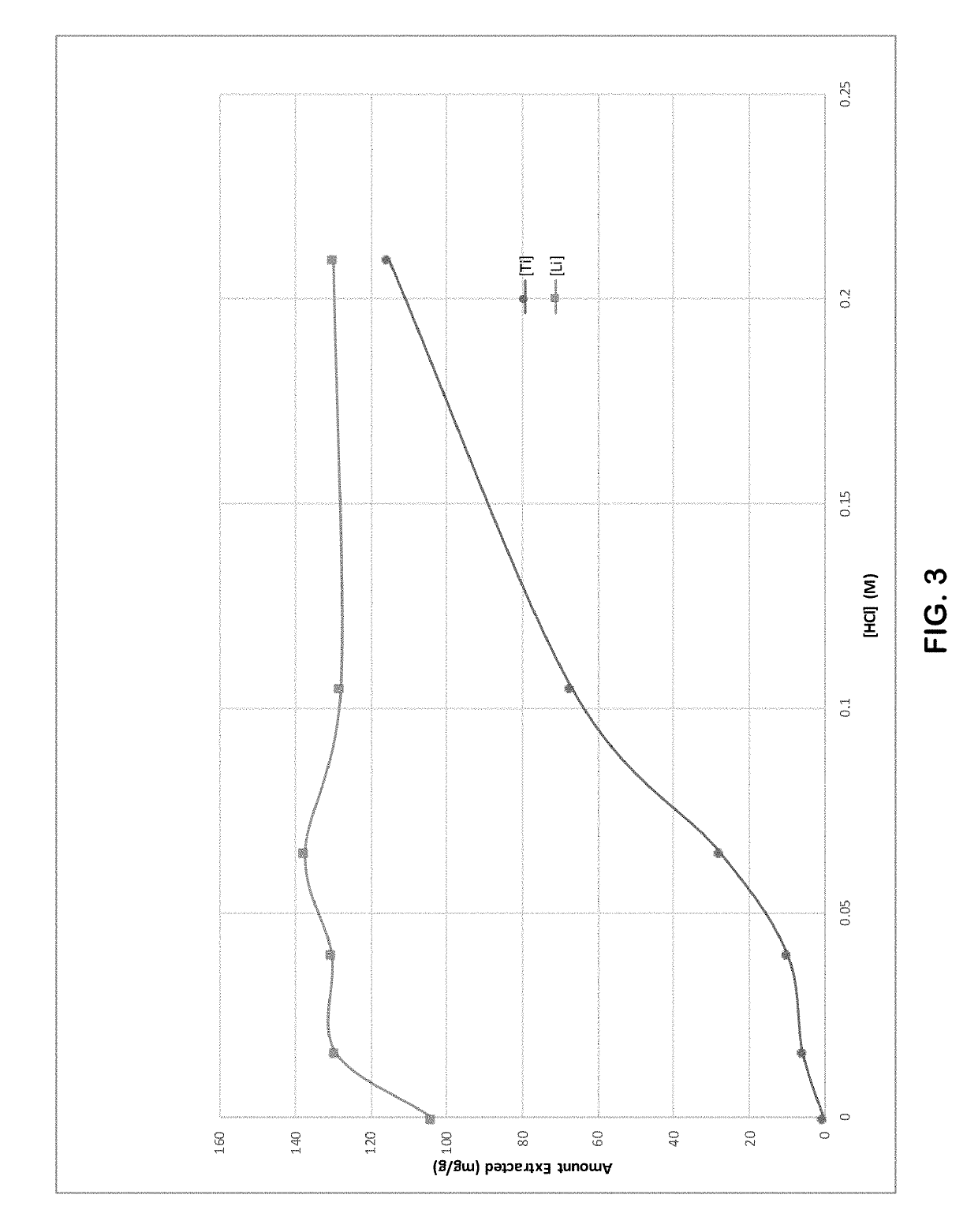Process for recovery of lithium from brine
a lithium ion and brine technology, applied in the field of brine recovery methods, can solve the problems of few viable ways to recover lithium from these sources, and affecting the recovery of lithium
- Summary
- Abstract
- Description
- Claims
- Application Information
AI Technical Summary
Problems solved by technology
Method used
Image
Examples
example
[0078]A test unit was constructed to demonstrate the process according to one embodiment of the invention. A schematic drawing of the test unit is shown in FIG. 5.
[0079]The test unit consisted of six reactors (R1-R6), each one equipped with air agitation diffusers and five of which were equipped with immersed membrane modules. Reactor R4, utilized for acid regeneration of the lithium ion sieve, was not equipped with a membrane. The working volume of each of the reactors was approximately 5 liters with the exception of the reactor R4, which had a working volume of approximately 1.1 liter.
[0080]Lithium titanate (LTO) was used as the lithium ion sieve. The LTO was synthesized by reacting lithium hydroxide with titanium dioxide at a molar ratio of approximately 2.2:1 at a temperature of 700° C. for 4 hours. FIG. 4, discussed above, provides the particle size distribution of the LTO used in this example. The initial LTO produced from the synthesis was converted to metatitanic acid (HTO) ...
PUM
| Property | Measurement | Unit |
|---|---|---|
| particle diameter | aaaaa | aaaaa |
| particle diameter | aaaaa | aaaaa |
| diameter | aaaaa | aaaaa |
Abstract
Description
Claims
Application Information
 Login to view more
Login to view more - R&D Engineer
- R&D Manager
- IP Professional
- Industry Leading Data Capabilities
- Powerful AI technology
- Patent DNA Extraction
Browse by: Latest US Patents, China's latest patents, Technical Efficacy Thesaurus, Application Domain, Technology Topic.
© 2024 PatSnap. All rights reserved.Legal|Privacy policy|Modern Slavery Act Transparency Statement|Sitemap



